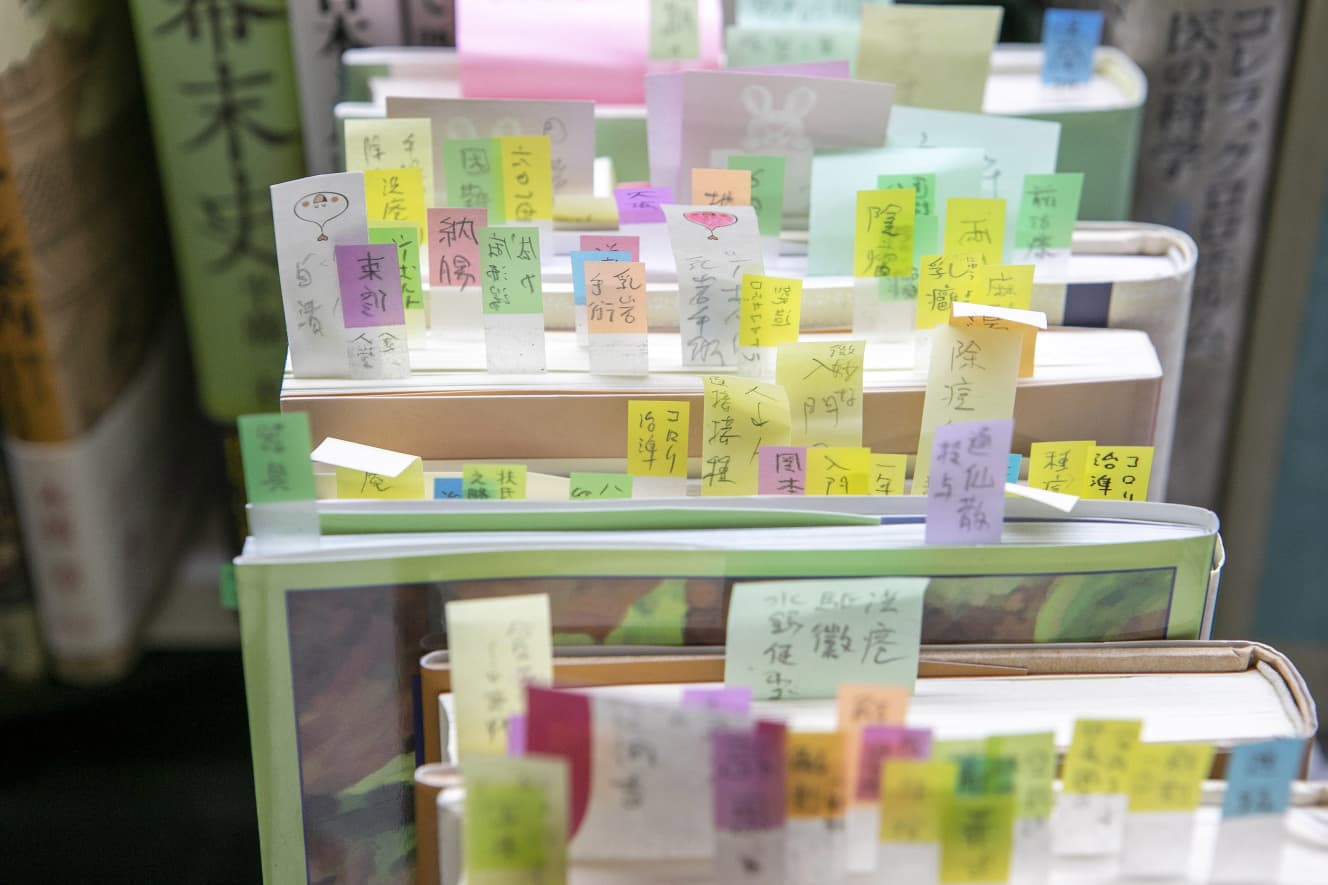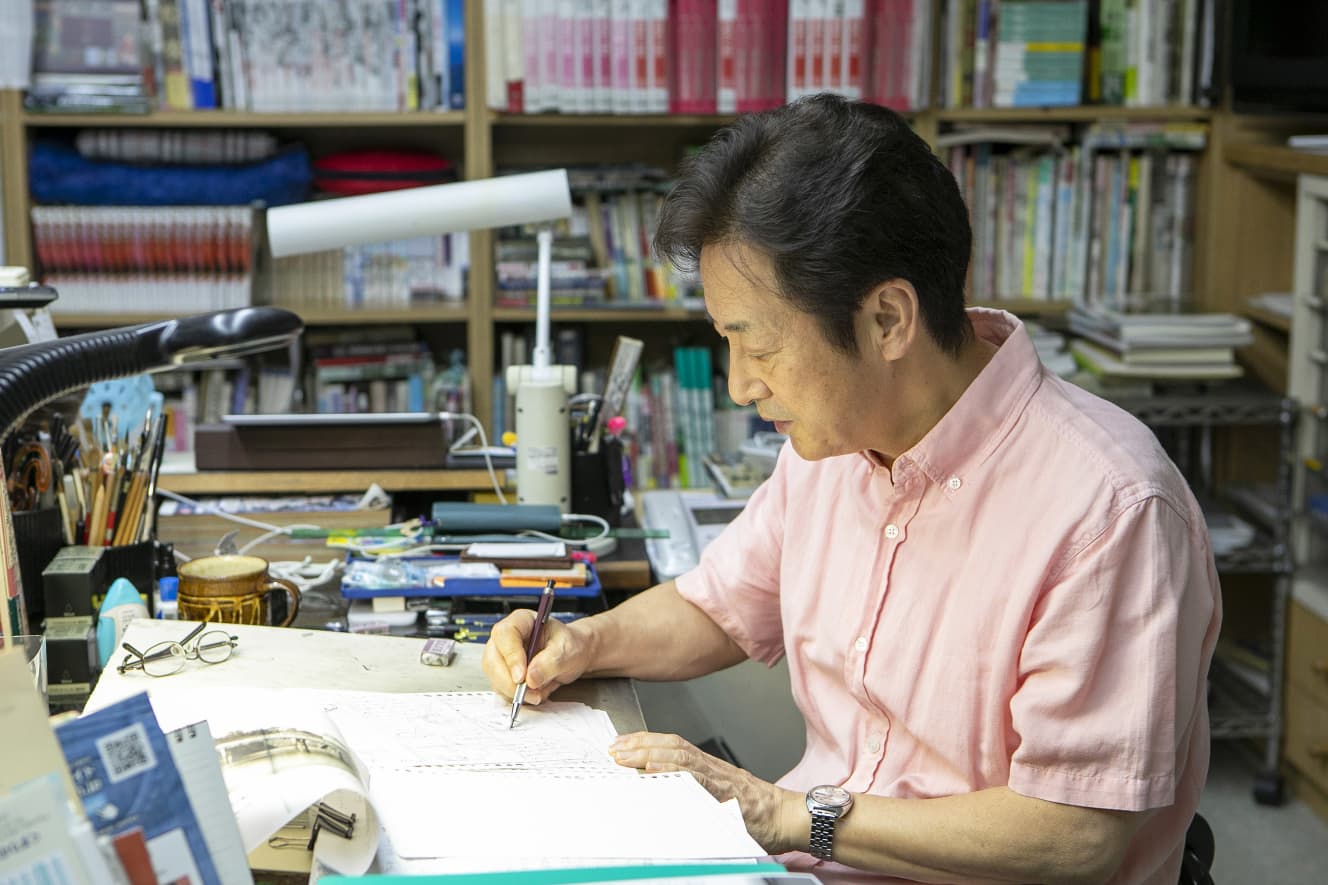The author of “JIN” talks about “People and Pandemics” through his works.
Trial Read】Revisit that masterpiece once again! The first volume of "JIN" is now available for a limited time!
Very similar to the modern COVID-19 crisis! What did the pandemic at the end of the Edo period bring?
The Bakumatsu medical manga “Chivalrous Doctor Fuyuma” (co-authored by Murakami Motoka and Kawano Ichiro / Shueisha), which has been serialized in “Grand Jump” magazine since 2018, is very interesting and synchronized with the COVID-19 crisis today. Friend or foe, for or against? Today, the world is divided in various ways. Mr. Murakami, who continues to depict “the times and people,” talked about the relevance of the pandemic and social trends through his own works.

Chivalrous Doctor Fuyuma,” a work that seems to foretell the COVID-19 crisis.
The story begins in 1856 in Osaka (present-day Osaka). The main character, Fuyuma Matsuzaki, learns medical science, spreads smallpox vaccination, and contributes to the people of the city. The reason he decided to return to medical manga at the end of the Edo period, eight years after “Jin,” was because there were aspects of the story that he had not fully depicted in “Jin.
Our ancestors died of diseases that would not kill them today. He brought down a super doctor from the present day to depict the frustration and regret of doctors, but he was driven by the desire to depict the story of doctors who were fighting for their lives in a world where there was no Jin Minakata.
However, about a year after “Chivalrous Doctor Fuyuma” was serialized, a corona pandemic broke out, and Murakami’s writing came to a halt.
When I drew “Jin,” I was able to look at the story from a modern perspective because it was a story about the hardships faced by people a hundred or so years ago,” he said. But this time, the reality was more amazing, and I wondered if there was any point in depicting such a story from the Edo period.
In the midst of all this, a special re-edited version of the drama “Jin” was broadcast in April 2020. Many people saw the COVID-19 crisis in Jin’s solitary struggle to confront the plague. Encouraged by the comments that “I was given courage” and “I was moved,” Murakami began to draw again.
Another reason I decided to continue painting was that the COVID-19 crisis of today and the pandemic at the end of the Tokugawa Shogunate were very similar. The situation of the world, the reactions of the government, and the way many other things went astray overlapped so perfectly that I wondered what the hell people had been doing for the past hundred or so years. So I decided that it made sense to paint this, to try to paint a picture of a pandemic that happened a hundred and some decades ago.”


Discrimination against medical workers, exclusion of people returning to their hometowns… Human nature revealed by the COVID-19 crisis
In “Chivalrous Doctor Fuyuma,” lies and hearsay about the plague, hoarding, fear of vaccines (smallpox), and even the reliance on God are described, phenomena so identical to those of today that one might think it is a book of prophecy.
What the COVID-19 crisis has shown us is that, in the end, nothing has changed for mankind. When something unknown appears, even with modern science, we go, “What? and that’s that. Unjustified discrimination against medical personnel has also become a problem. I wondered what it was like to undermine people who were prepared to be infected themselves and even their families, but I was shocked to learn that people can be so distrustful of people when it comes to infectious diseases.
I heard that during World War II, people who came back from overseas after the war suffered discrimination, and the same thing happened with the COVID-19 crisis due to the temperature difference between Tokyo and the rural areas. When I saw that, I thought that people must have a sense of not coming in, not coming back out, and so on.


There was a connection between the pandemic and the invasion of Ukraine!
This COVID-19 crisis, Murakami says, made him study what human society is like. Many people probably thought that through the pandemic, they got a glimpse of human nature.
And then, with the corona still unresolved, comes the Russian invasion of Ukraine this time. Murakami’s pen almost stopped here again.
At the beginning, the Russians flirted with the idea of nuclear weapons,” he said. Until then, there was an unspoken rule that they promised not to use nuclear weapons, but I thought they were suspicious.
What I wanted to depict in “Chivalrous Doctor Fuyuma” was that the present day is directly connected to that era of more than a hundred years ago, and I had planned to set the ending of this story in the near future. But when I heard Putin’s comment, I even wondered if the earth would exist at that time…. That’s when I was tormented for the second time by the question, “Is there any point in painting this?
The pandemic and the invasion of Ukraine. Mr. Murakami believes that it is no coincidence that these two events occurred almost simultaneously.
In 1862, the year Jin traveled back in time, measles and cholera struck Edo (present-day Tokyo) in a double whammy. Shizu Sakai (medical historian. According to a survey by Shizu Sakai (a medical historian in charge of medical research for Murakami’s medical manga), more than 240,000 people died. Of Edo’s population of one million, one death in four is almost catastrophic.
The situation was not the fault of the government, but I think it revealed the roots of Japan’s original political malady and brought down the shogunate in one fell swoop.
I think this is also the case with the Ukraine problem. The pandemic caused all the countries to think only of their own interests, and the “cooperation” that had been called for did not work at all. I think Putin saw through that and took that action.

Did we really take advantage of the beauty of being at peace and its value…
Murakami says that the trend from the end of the Edo period to the Meiji Restoration was a government-made history created by the government that continues to the present day, and was not as glorious as we learned in school. After the pandemic, national governance was rattled, and from then on it was nothing but a power struggle.
After World War II,” Murakami said, “there was a period of peace in Japan, but did we really take advantage of the beauty of peace and its value? If we feel that peace is something that is given to us, I think we are at a point where we need to reflect on that.
Mr. Murakami was born in 1951. He spent his youth watching the backs of the so-called “baby boomers. Compared to the 1960s, when demonstrations were held repeatedly, Japan has become much richer and more stable. Toward the 1990s, the divisions within the country were disappearing, but now, over the year 2000, I fear that the cracks are deepening again. Closer to home, public opinion in Japan is now split in two over former Prime Minister Abe’s state funeral.
I feel that holding a state funeral in the current state of affairs will not soothe the people.” The world is so different from the time of Mr. Shigeru Yoshida. There is a danger of it becoming political, and above all, the government should not do anything that will aggravate the division of the people. Instead of agitating the division, we should now focus all our efforts on how to heal it.”
The Yayoi Art Museum is currently holding the “Motoka Murakami Exhibition” to commemorate the 50th anniversary of her debut. Murakami says, “I have been depicting human dramas in the times from the perspective of a picture diary book.

Murakami Motoka is a manga artist. (Weekly Shonen Jump) in 1972, and has received numerous awards, including the 6th Kodansha Manga Award for “Gakuto Retsuden” in 1982 and the 15th Tezuka Osamu Cultural Award Manga Grand Prize for “JIN-Jin” in 2011. His works include “Roku-Sanshi no Ken” and “Ryu-RON” (both published by Shogakukan), “JIN-Jin” and “Chivalrous Doctor Fuyuma” (both published by Shueisha).
The first volume of the Bakumatsu medical manga "JIN" is now available for a limited time (until August 31)! (until August 31)
Interview and text by: Ide Chimasa Photography: Mayumi Abe